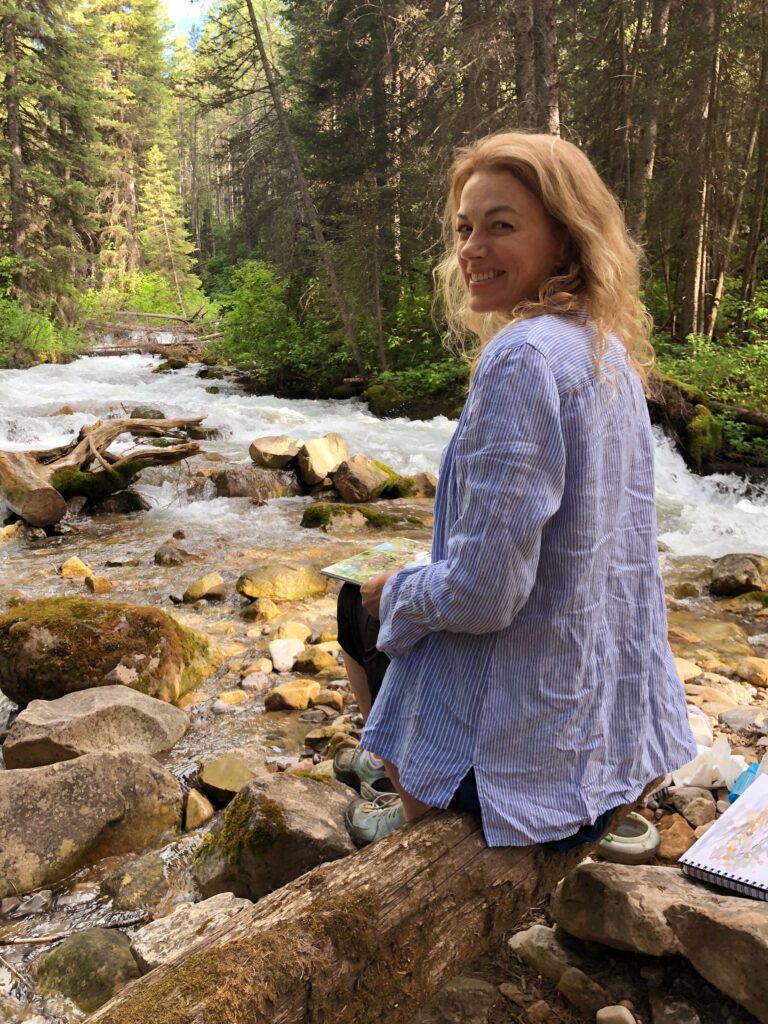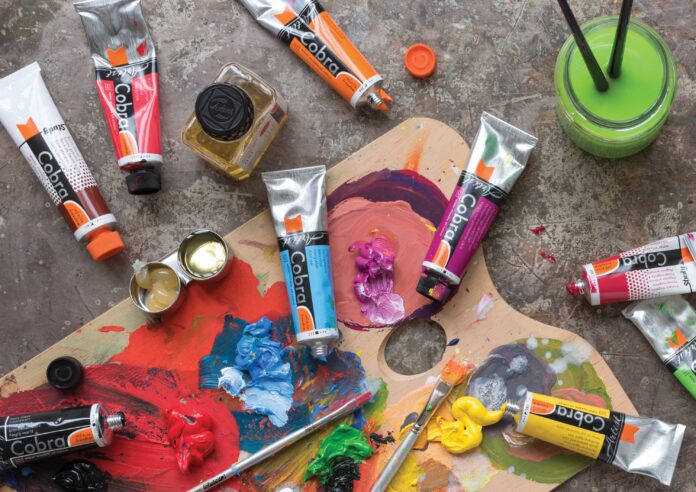If you have questions about how to use water-mixable oils, start here with this Q&A from Christine Lashley (and check out her “Vibrant Landscapes” video workshop).

Question 1:
Can water-mixable oils be used in combination with regular oil paints? I have so much paint already; it’s hard to imagine starting over entirely with all the colors I want to use. Also, is there a cost difference between water-mixable and regular oils? ~ Audy Davison, from Facebook
Answer: The cost is about the same, and you can absolutely mix them! In fact, I use both water-mixable and traditional oil paints in my own work. You might want to start with one tube of water-mixable paint to tone or draw with (I like Royal Talens Cobra transparent red oxide for this step). You can use this color to start with thin washy layers, wipe off, restate, and then put the water away once you’ve set up your design and big values. At that point you can move to direct painting (or alla prima, which means ‘all at once’) with whatever type of oil paint you want.
Alla prima with no solvent has perks: the artwork remains vibrant when dry, and brushstrokes appear juicy and satisfyingly confident. They also hold their shape better. Conservationists state that the paint film with the most integrity over time is one painted directly and not in layers or with solvents or varnish. This painting method has helped my students paint looser and avoid the mistake of trying to eke out a puddle of mixed paint with a scrubby thin layer or using solvent to extend what is on the palette.
You may also want to try Schmincke Medium W, which supposedly transforms any traditional paint into water-mixable. I haven’t used it myself, but some of my students have. I’d just urge caution when working with any medium — use only 5 percent maximum, regardless of what the bottle says. Conservators at the National Gallery of Art stressed to me that paints are mostly formulated properly in the tube; additives, thinning, and mixing of types (such as acrylic, alkyd, or oils) are not recommended. I know it’s hard to sift through all the data out there because there are many opinions, but I think a 5 percent-or-less rule is a safe bet.

Question 2:
I’ve heard that water-mixable oils don’t flow as easily as traditional oils, and that some mediums make them even stickier, almost gummy. Is there a recipe for making them flow easier, and is there a medium that might also make them dry quicker? ~ Elaine Miller, Portsmouth, NH
Answer: A simple trick is to add a dot or two of oil or use some Gamblin solvent-free gel to aid flow, although certain brands, such as Cobra, are more creamy right from the tube. If the paints are sticky or gummy, it’s usually down to one of two reasons. The first is that you’re using too much medium — oil, gel, or paste.
The second is a bit more complex and has to do with the paint’s interaction with water, as well as the drying time of water-mixable paints. When mixed with water, the paint will flow, but when the water evaporates (after one to 10 minutes, depending on the humidity in the air and the amount of water added), the thinned paint can seem to seize up or get “grabby” on the canvas or palette. The paint can also shift darker in color when the added water evaporates.
To combat this, my rule of thumb while painting is to never add a dab of water to help the paint spread. I only use water for the underpainting or drawing stage; and at the start, I use a lot of it. I use large brushes and very soupy mixes that drip and spread. I even use a water spray bottle as a tool at this stage. Many people think this looks like watercolor on my videos, but it’s oil paint. Ninety-nine percent of my thin preliminary washes get painted over with thicker paint in the second stage of my process — direct painting with a knife or brush, and no water added.
It’s important to note that water evaporates faster than solvent would, so artists making the switch can be troubled by this quick shift. Once you know about it, however, I think the quick dry time is an asset, as I can paint my next layer when the first is dry to the (light) touch. Once the watery layer evaporates into a thin film, it’s still re-soluble with water so I can continue to refine my underpainting. To fully dry this preliminary layer by oxidation takes about two to three days. The paint will not be re-soluble after this point.
Question 3:
As I’m making the switch, what is the ratio of water-mixable oils to my regular oils, and can I use traditional oil mediums with both? ~ Debbie Moore, from Facebook
Answer: The oils (traditional and water-mixable) are intermixable. If you exceed 15 to 20 percent ratio of “other stuff” (traditional mediums), however, the water-mixable properties are lost. Traditional mediums all contain solvent, so keep this in mind if you are trying to go solvent-free, as there may be limited benefit to switching.
Question 4:
Can Liquin be used with water-mixable oils? If not, what would be a comparable substitute? ~ Kay Cowan, from Facebook
Answer: Liquin contains solvent (petroleum distillates), so I don’t use it. I would suggest Gamblin solvent-free gel or liquid.
Question 5:
Does the opacity of the water-mixable oils depend on the amount of medium or water one uses, much like watercolor? ~ Geri M. Davis, From Facebook
Answer: Yes, to some degree. A better comparison is that the paints act like traditional oils in all aspects of opacity. Watercolor is formulated differently than oil paints (gum arabic is the binder in watercolor, and oil in oil paints). Watercolor is made to be thinned out. Oil paint is made to be used straight from the tube; you do not need medium. The paint load should be more in an oil painting versus a watercolor, as this will allow a sturdy paint film to form.
***
Helpful Links:
- Connect with the artist: www.christinelashley.com
- Get Christine Lashley’s “Vibrant Landscapes” video workshop: PaintTube.tv
- Related Article: Working Out the Kinks of Water-Mixable Oils
And browse more free articles here at OutdoorPainter.com




